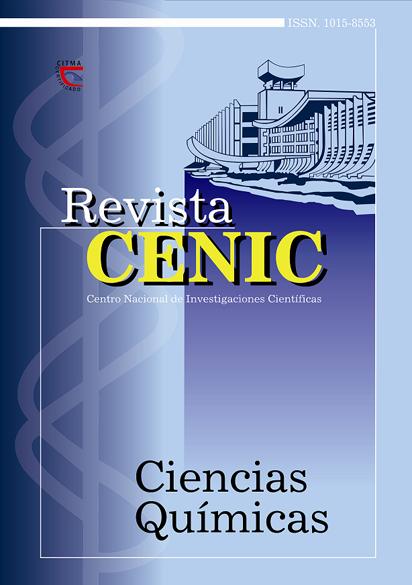Study of the vertical distribution of intensities with the excitation energy of the measured lines in ICP-AES
Abstract
Inductively Coupled Plasma Atomic Emission Spectrometry (ICP-AES) is a technique widely used in
multielemental analysis. In this work, the intensity of 89 atomic and ionic lines with Total Excitation Potential (PET
in Spanish) ranging from 1,62 to 16,51 eV was studied, while applied power, nebulizer gas flow rate and observation
height above the load coil were varied. In the low zone of the plasma, the relationship between intensity and
excitation energy showed the usual behavior of the thermal excitation mechanisms (e.g. collisions with electrons).
The same behavior was observed when the observation height was increased and plasma was operated in conditions
near to local thermal equilibrium (LTE). In contrast, when plasma was operated far away from LTE and the
observation height increased, the dependence of line intensity with energy drastically changed. Lines having an
upper ionic level, which is more probable to be selectively populated via inelastic collisions between analyte atoms
and excited Ar atoms or Ar ions, showed a less intensity reduction while the observation height increased. Experimental
evidence, not reported before, on the existence of Penning Ionization as excitation mechanism in ICP-AES
is shown. On the other hand, Charge Transfer was confirmed as a non thermal process explaining the behavior of
lines with PET near the first ionization energy of Ar. Some specific reactions describing those processes of energy

Downloads
Published
How to Cite
Issue
Section
License

This work is licensed under a Creative Commons Attribution-NonCommercial-ShareAlike 4.0 International License.
Los autores que publican en esta revista están de acuerdo con los siguientes términos:
Los autores conservan los derechos de autor y garantizan a la revista el derecho de ser la primera publicación del trabajo al igual que licenciado bajo una Creative Commons Atribución-NoComercial-CompartirIgual 4.0 que permite a otros compartir el trabajo con un reconocimiento de la autoría del trabajo y la publicación inicial en esta revista.
Los autores pueden establecer por separado acuerdos adicionales para la distribución no exclusiva de la versión de la obra publicada en la revista (por ejemplo, situarlo en un repositorio institucional o publicarlo en un libro), con un reconocimiento de su publicación inicial en esta revista.
Se permite y se anima a los autores a difundir sus trabajos electrónicamente (por ejemplo, en repositorios institucionales o en su propio sitio web) antes y durante el proceso de envío, ya que puede dar lugar a intercambios productivos, así como a una citación más temprana y mayor de los trabajos publicados (Véase The Effect of Open Access) (en inglés).













